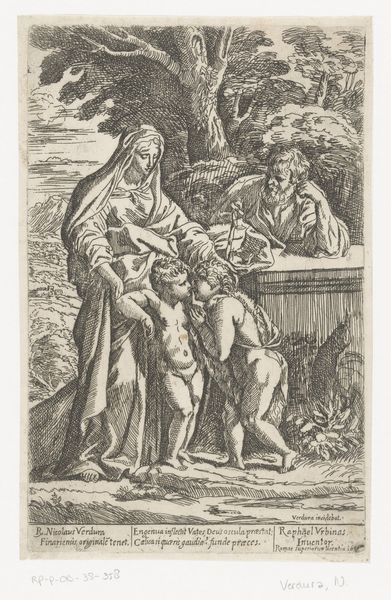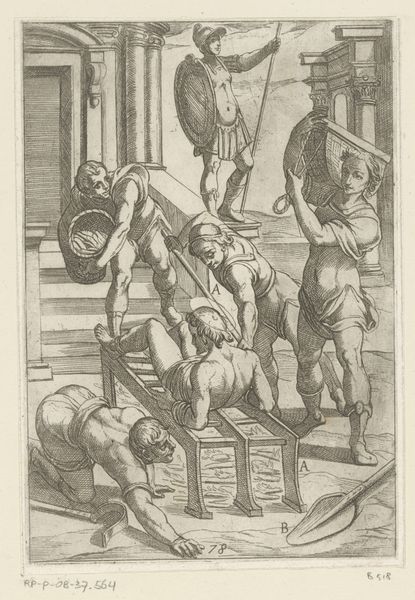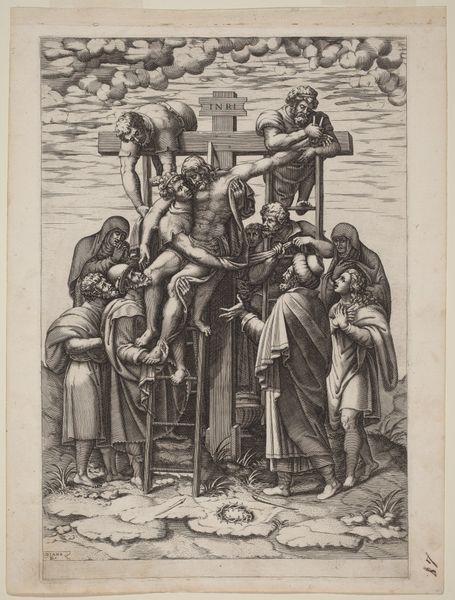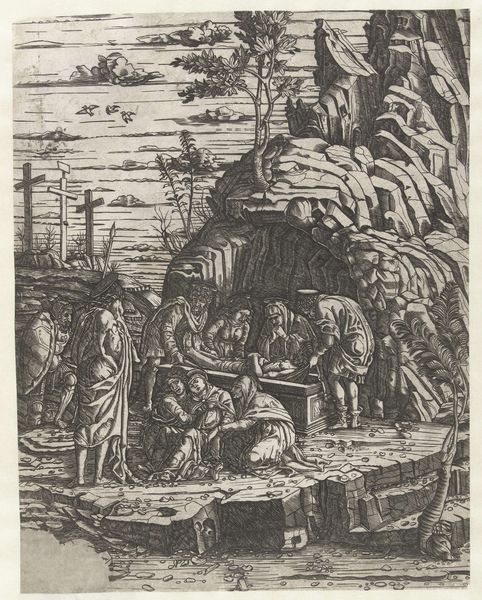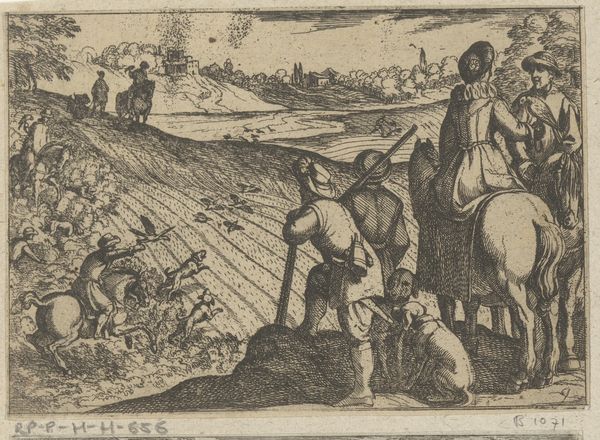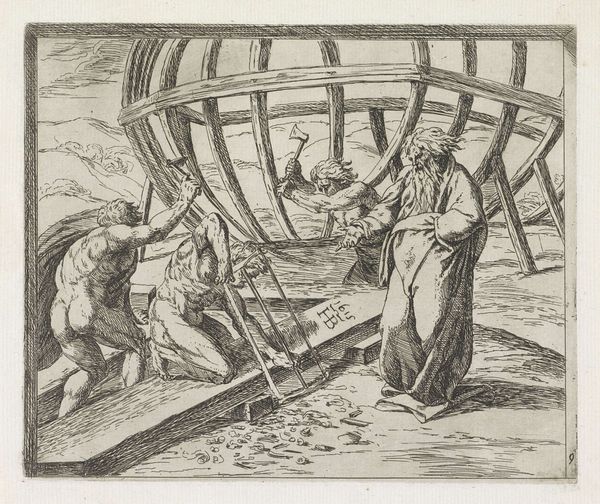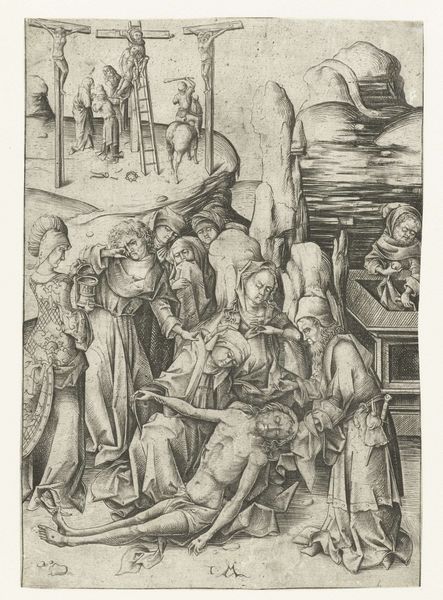
print, engraving
#
baroque
# print
#
pen illustration
#
old engraving style
#
figuration
#
history-painting
#
engraving
Dimensions: height 194 mm, width 133 mm
Copyright: Rijks Museum: Open Domain
Curator: I am immediately struck by the unsettling duality of this engraving. It feels clinical, almost detached, yet depicts profound human suffering. Editor: Indeed. We are looking at "Two Methods of Drowning," an engraving, likely printed between 1565 and 1630 and held at the Rijksmuseum, offering a fascinating glimpse into societal attitudes towards crime and punishment in that era. Antonio Tempesta is the artist to whom the work is attributed. Curator: Drowning appears as a ritualistic event in this representation, focusing on two very different executions. One is carried out ceremoniously using a chest marked 'A', the other is seemingly less formal, but is nonetheless executed using a marked 'B', a large sack containing a snake and a tied individual. What about that strange pairing—why these two methods and this unusual symbolism? Editor: Consider the baroque period and the cultural preoccupation with public spectacle. Executions weren’t merely about punishment; they were meticulously staged displays of power, reinforcing the social order. The "methods" might represent gradations of guilt, class distinctions, or even symbolic offenses that triggered specific types of death. It makes you wonder about the stories—perhaps moral narratives—meant to be evoked. Curator: That is certainly reflected by how it is designed to address the viewers, perhaps reflecting what at that moment they knew to be 'right'. It is intriguing, but disturbing to think about it. Do you think those symbols reinforce the "appropriate nature" of each 'criminal', perhaps suggesting each fate that they deserve? Editor: The backdrop itself offers additional symbolic depth. Notice the pyramid, classical architecture, and distant structures? This constructed landscape places the events within a context that seems both historically grounded, and intentionally timeless. These images might speak to justice, memory, and the perceived immutable order, and are definitely embedded within the power structure in place at the time. Curator: That background indeed creates a stark, detached atmosphere and its cultural meanings create a powerful tension—a grim reminder that even legal procedures may become chilling rituals over time, something society needs to be always aware of. Thank you for guiding us. Editor: My pleasure. Thank you, for pointing the symbolism, I've truly enjoyed exploring how historical and cultural contexts imbue artworks with meaning and lasting power.
Comments
No comments
Be the first to comment and join the conversation on the ultimate creative platform.


